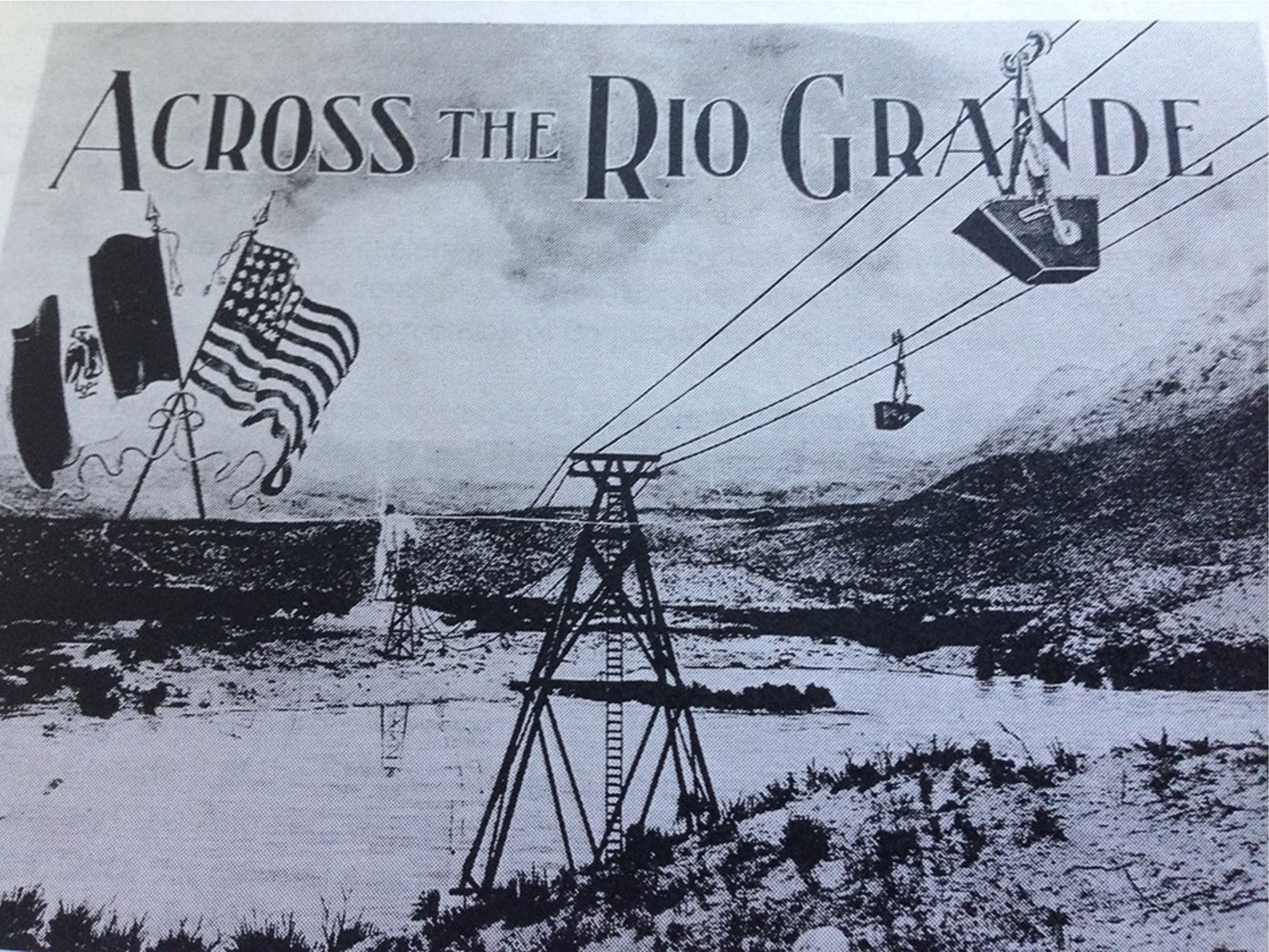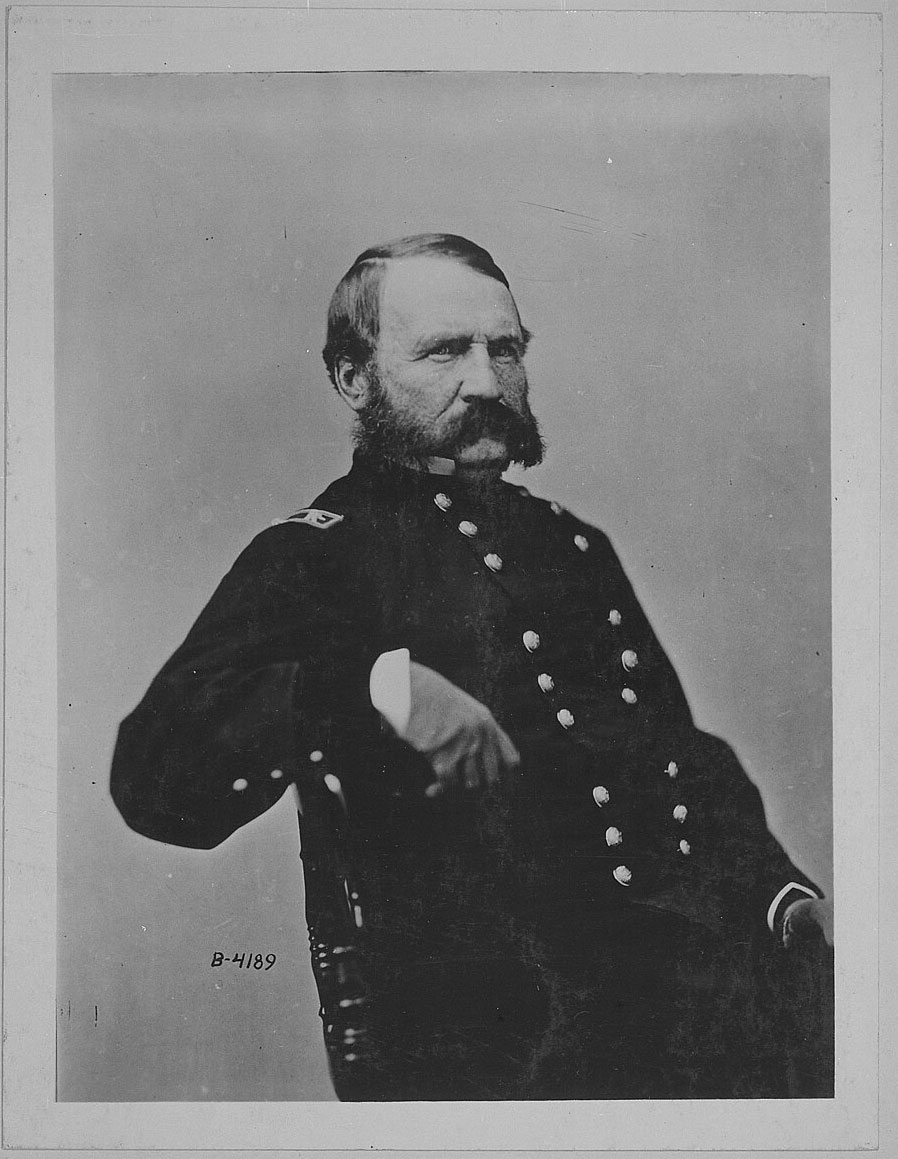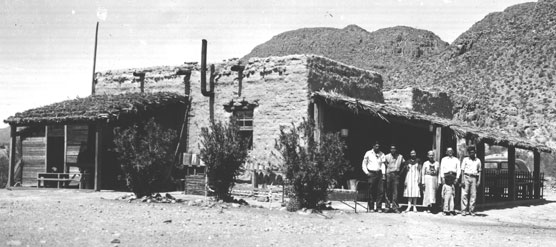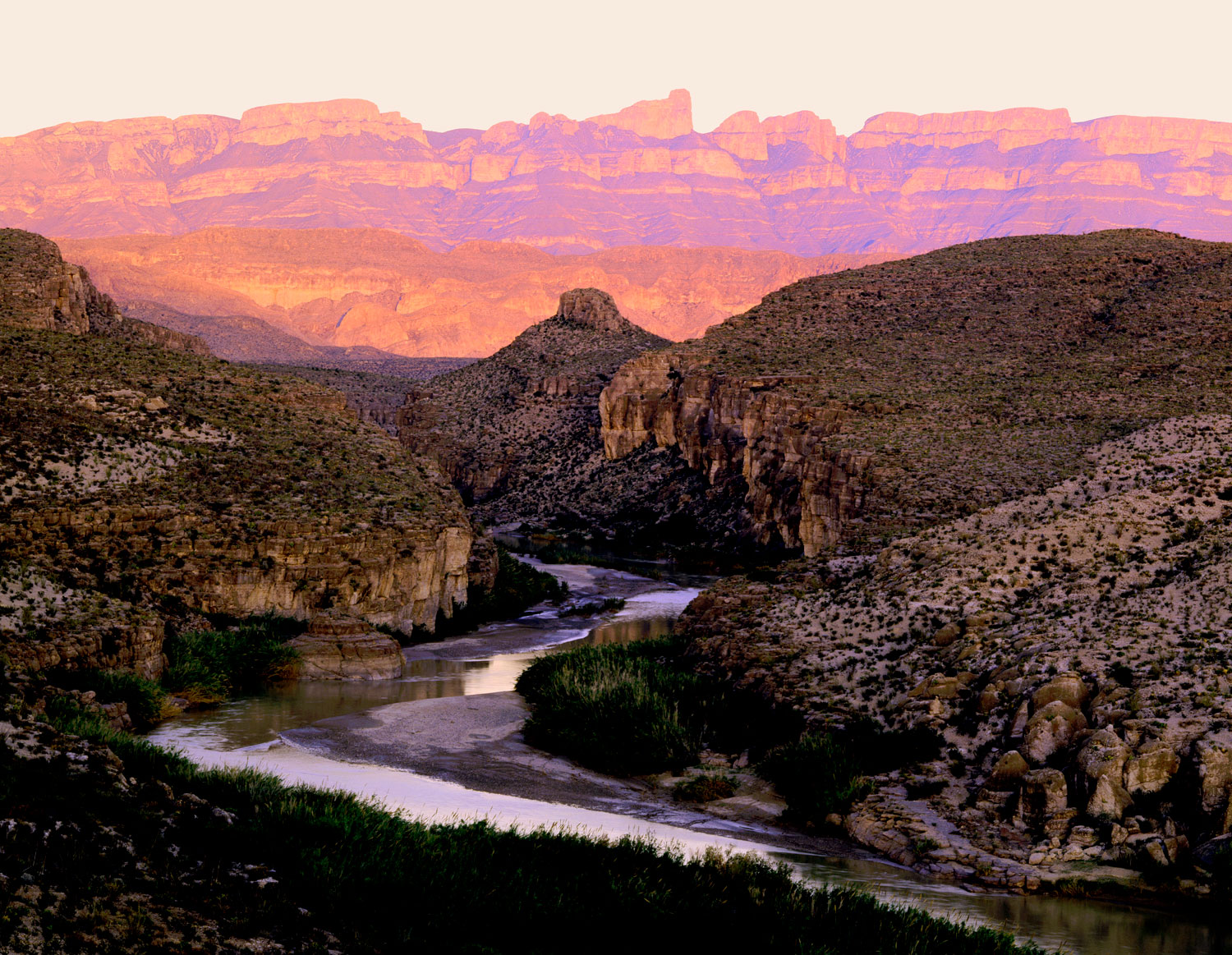

BOQUILLAS, TEXAS. Boquillas, also known as Rio Grande Village, was on the Rio Grande eighteen miles southeast of Panther Junction in Big Bend National Park in southeastern Brewster County. Boquillas means “little mouths” in Spanish, presumably a reference to the numerous small streams or arroyos draining the Sierra del Carmen into the Rio Grande. The first American explorers of the region were surveyors who came under the command of Maj. William H. Emory in the summer of 1852. Emory’s report made no mention of any settlement in the area, and the first development there did not occur for another three decades.
On January 16, 1882, surveyors John T. Gano, E. L. Gage, and E. M. Powell traveled down the Rio Grande on flat-bottomed boats and arrived near the mouth of Boquillas Canyon. They were escorted by Texas Rangers under Capt. C. L. Nevill. According to local legend, they discovered a number of horses on the north side of the river near the mouth of the canyon. As they lacked the means to bring the horses with them, and because they believed that the animals would be used by hostile Indians, Nevill ordered all the horses killed; thus the canyon was called Dead Horse Canyon, and eventually the mountains to the north became known as the Sierra del Caballo Muerto, which means “dead horse mountains” in Spanish.
In the following year silver and lead mining began in Boquillas del Carmen, just across the Rio Grande in Mexico. When the railroad built through Marathon, that northern Brewster County town became the nearest railhead for the output of the Del Carmen mines. The Consolidated Kansas City Smelting and Refining Company built a cable tramway to transport ore from Mexico to the United States side, where it built a processing plant.
For the next twenty years various speculators bought and sold land on the Texas side of the river, but the first permanent resident of Boquillas, Texas, was Dennis Edward (Ed) Lindsey, who was appointed by the United States Customs Service to inspect ore shipments from the Del Carmen mines in 1894. The enterprising Lindsey also opened a store that served the population on both sides of the river; graded a crude road from Boquillas to Marathon, which the Consolidated Company later upgraded to a second-class highway at a cost of $75,000; and became the unofficial local postmaster. When the residents of Boquillas, Coahuila, discovered that the mail service via the railroad to Marathon was much quicker than the Mexican mail, Lindsey began picking up mail for them whenever he went into Marathon for supplies. When he finally applied for an official post office in July 1896, he estimated the local population as 300 on the Texas side of the river, including San Vicente, and 1,000 on the Mexican side. The application was approved, and the post office was opened in Lindsey’s store.
The development of Boquillas continued to depend heavily on the mining operation across the river. In 1897 La Villa de Boquillas del Carmen in Coahuila was declared an official villa, and in 1899 Robert T. Hill reported that its population was 2,000. In that year Daniel Guggenheim of New York set up the American Smelting and Refining Company (ASARCO), which took over Consolidated KSARCO’s cable tram and processing plant in Boquillas.
In 1900 Lindsey sold his store and moved to Lajitas. Shortly thereafter the rancher Martín Solís, who had been leasing land in the area since 1893, bought his own land and opened a store to replace Lindsey’s. Another local entrepreneur was Jesse Deemer, who had arrived in the Boquillas area in the 1880s. With the backing of Marathon merchant C. W. Hess, Deemer opened a second store in competition with Solís’s.
But the most enterprising of all may have been the German immigrant Max A. Ernst, who settled eight miles northwest of Boquillas at a place called La Noria (the well). Ernst was a rancher, notary public, justice of the peace, and county commissioner and opened a small schoolhouse at La Noria.
In 1901 he was named the postmaster, a fact that suggests he had already unofficially moved the Boquillas post office there, although he did not formally apply for such a move until 1903. He also provided more competition for the Solís family by opening the Big Tinaja Store, a business move that may have led to his murder. On September 27, 1908, Ernst was shot three times by an unknown assailant. Before he died he wrote a note that suggested a Solís had been responsible. Several members of the Solís family, including Martín’s son Benito, who ran the store, were suspected, but never convicted. Around 1911, perhaps due to the persistent rumors about his role in Ernst’s death, Benito Solís sold the store and moved away. Also in 1911 ASARCO closed the Boquillas smelter.

With the death of Ernst and the departure of Lindsey and Solís, María Sada, who had moved to Boquillas in 1906, became the leading local entrepreneur. She ran a store and cafe there until 1936, when her husband died and she moved to Del Rio. In October 1913 W. K. Ellis, who owned a candelilla wax factory at McKinney Spring, ten miles northeast of Ernst’s store, was named postmaster, and the post office’s name was changed from Boquillas to McKinney Spring. The McKinney Spring office was discontinued in 1921.
In 1914 a group of San Antonio and Houston businessmen renewed interest in the Boquillas mining district. The Mexican-owned Puerto Rico Mining Company was operating in the Sierra del Carmen, but the closing of the Boquillas smelter meant that the ore had to be shipped to Marathon and carried by railroad to the ASARCO smelter in El Paso, the only such facility in West Texas. The Texas investors built a second and more elaborate cable tramway across the Rio Grande, a few miles downstream from the old KSARCO tram. This new tramway terminated at La Noria and necessitated the construction of a road from that village to the Boquillas-Marathon highway. The tramway was briefly successful, but the Puerto Rico mine closed before the end of World War I. The Glenn Spring raid occurred on May 5, 1916, twelve miles west of Boquillas. Shortly thereafter, whether from fear of future raids or because of lingering suspicions about his link to the bandits, Deemer sold his store and moved to California.
The estimated population of Boquillas grew from twenty-five in the late 1930s to thirty in the mid-1940s and forty by the end of the decade, but by the early 1960s had dwindled to six. As the visitation to Big Bend National Park grew, in 1974 Jose Falcon opened a restaurant overlooking the Rio Grande. Park visitors could board a homemade rowboat and be transported across the Rio to visit the small village. Visitors could eat tacos and drink cold beverages. Shortly after, the Park Bar opened to provide thirsty travelers with beer and stronger stuff. In the late 1980’s, Texas singer/songwriter Robert Earl Keen dropped in to the Park Bar, which at that time had a guy from the Texas side playing guitar and singing for tips. Robert Earl was inspired to compose “Gringo Honeymoon”, which many consider his best song.
In 1994, the Mexican government created a system of protected natural areas, overseen by the National Commission of Natural Protected Areas (CONANP). Boquillas is adjacent to and therefore the gateway to Maderas del Carmen natural protected area.
By the year 2000, Boquillas del Carmen had at least 250 residents and an estimated 15,000 people per year crossed the river from the National Park. In May of 2002, in response to the 9/11 attacks, the newly created Department of Homeland Security closed all the informal border crossings on the Rio Grande. Since tourism was the primary economic activity for Boquillas, many residents left to seek opportunities elsewhere, mostly to Muzquiz, 150 miles south of Boquillas. It wasn’t long before the population of Boquillas dwindled to about 70 souls.

In 2010, at a meeting between US president Obama and Mexican president Calderon, it was decided to create a new Port of Entry to facilitate crossing to Boquillas. On April 10, 2013, the new Port of Entry opened for business. Since that time, more than 150,000 visitors have made the trip to Boquillas, and the town’s population has grown to an estimated 350 persons.
